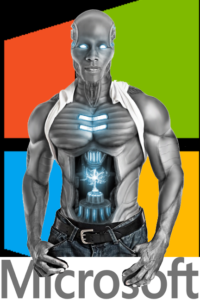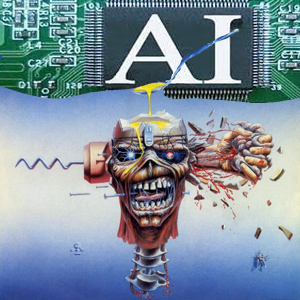 After talking about billionaires giving away their fortunes , Melinda and Bill Gates talked about artificial intelligence. Edited and commented from a post at the Seattle Times
After talking about billionaires giving away their fortunes , Melinda and Bill Gates talked about artificial intelligence. Edited and commented from a post at the Seattle Times
Bill Gates grinned and swiveled in his giant red leather chair. “It’s the Holy Grail. It’s the big dream that anybody who’s ever been in computer science has been thinking about.”
Melinda Gates took a different tack. “The thing I want to say to everybody in the room is: We ought to care about women being in computer science.”
Another lady, Meg Mitchell, a researcher at Microsoft, also spoke up. Mitchell works on

Meanwhile .. all of the robots we talk to on our decides .. Siri, Alexa, and Cortana ..are girts!
computer vision and language problems, and is a founding member — and only female researcher — of Microsoft’s “cognition” group. “I call it a sea of dudes.” “I do absolutely believe that gender has an effect on the types of questions that we ask,” she said. “You’re putting yourself in a position of myopia.”
“From a machine-learning perspective, if you don’t think about gender inclusiveness, then oftentimes the inferences that get made are biased towards the majority group — in this case, affluent white males,” said Margaret Burnett, a professor at Oregon State University’s School of Electrical Engineering and Computer Science. Burnett developed GenderMag, which helps software developers build systems that account for the differences in gender of their users.
 Burnett also has investigated how machine-learning systems suffer if the designers don’t properly account for gender. “If un-diverse stuff goes in, then closed-minded, inside-the-box, not-very-good results come out,” she said.
Burnett also has investigated how machine-learning systems suffer if the designers don’t properly account for gender. “If un-diverse stuff goes in, then closed-minded, inside-the-box, not-very-good results come out,” she said.
Tay, Microsoft’s chatbot released earlier this year, had a lot of un-diverse stuff going in. Within 24 hours of being exposed to the public, Tay took on a racist, sexist, homophobic personality. It did that because internet users realized that Tay would learn from its interactions, so they tweeted insulting, racist, nasty things at it. Tay incorporated that language into its mental model and started spewing out more of the same.
Companies like Microsoft are grappling with how to assemble better, more diverse data sets. “How do we make sure that the data sets we’re training with think about gender?” asked Lili Cheng, who led the Microsoft team that developed Tay. “The industry as a whole, ourselves included, need to do a better job of classifying gender and other diversity signals in training data sets.”
There’s already evidence gender disparity has crept into AI job listings. Textio helps companies change job-posting language to increase the number and diversity of applicants. It did an analysis of 1,700 AI employment ads and compared those with over 70,000 listings spread across six other typical IT roles. The analysis found AI job ads tend to be written in a masculine way, relative to other jobs.
An ad from Amazon.com for a software-development engineer merited a high masculine score because it uses language commonly associated with men, like “coding ninja,” “relentlessly” and “fearlessly,” said Textio CEO Kieran Snyder. Those words tend to lead to fewer women applying, and the ad also lacked any equal-opportunity statement, she said.
“It’s amazing how many companies are, on the one hand, disappointed with the representation of women in these roles and, on the other hand, happily pushing out hiring content like this,” said Snyder, who is a former Amazon employee. Amazon declined to comment.
“Everybody has a bit of their own bias,” said Katherine Heller, an executive director of Women in Machine Learning, a decade-old group dedicated to improving the gender diversity in AI. The organization hosts talks and presentations by female researchers, and also has a public directory of several hundred women working in machine learning, giving people a way to reach out to women in the community.
“Some of the cultural issues that play into women not being involved in the field could also lead to important questions not being asked in terms of someone’s research agenda.”
Some women in AI are focused on the next generation. Stanford’s Li started a group for 10th-grade girls called SAILORS that pairs intensive study with company field trips and mentoring. Not wanting to miss an opportunity to conduct research, Li did a study of the program and found that women who attended it had a statistically significant increase in technical knowledge, confidence and interest in pursuing careers in AI.
Chelsea Finn, a doctoral student at the University of California, Berkeley, said the most helpful thing for her is to see visible, female role-models.
That’s something women working in AI are acutely aware of. “By increasing my own visibility, hopefully I get more high-schoolers and undergraduates interested in this,” Mitchell said.